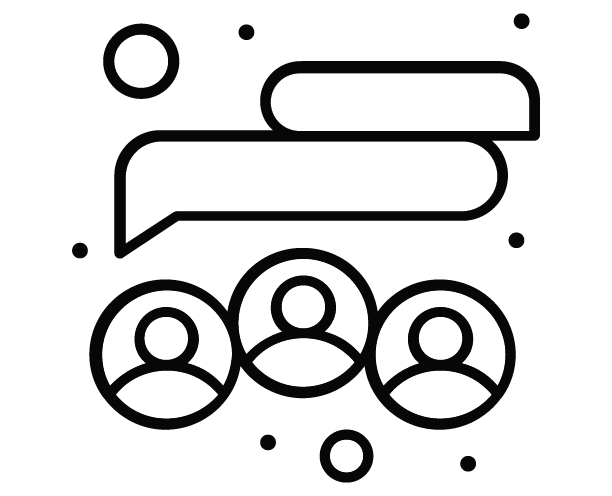IDG Hospice: Transforming Care Through Team Synergy
What is IDG Hospice?
Today, we’re going to dive into IDG Hospice to provide a deeper understanding of what it’s really about. Let’s begin with the fundamental question: what is the meaning of IDG in hospice? IDG is short for Interdisciplinary Group, which is the core and essence of every hospice care team.
This group comprises various hospice professionals, all working together to create a comprehensive and customized hospice plan of care for each patient. In this article, we’ll explore the mission of the hospice IDG, the roles of the team members, key elements of a successful IDG, meeting requirements, and training needs. Let’s dive in!

The Hospice Interdisciplinary Team and their Roles
The IDG Hospice is a team of skilled professionals at a hospice, or a palliative care organization, who work together to provide the best possible care to hospice patients and their families. Let’s take a closer look at each role of the interdisciplinary team:
Physician: The hospice physician is the medical expert on the hospice team. They help manage patients’ symptoms and pain and ensure they receive appropriate medical care. The physician collaborates with other team members to develop and update the hospice plan of care based on CMS guidelines for hospice IDG.
Nurse: Hospice nurses are hands-on caregiving experts. They provide direct patient care, monitor symptoms, and administer medications. They also serve as a vital link between the patient, family, and other hospice staff members.
Hospice Social Worker: The hospice social worker addresses patients’ and their families’ emotional and practical needs. They offer emotional support, help with financial and legal matters, and facilitate communication among hospice team members.
Hospice Chaplain or Spiritual Counselor: These professionals provide spiritual care and support to patients and their families, regardless of religious beliefs. They help patients find meaning in their experiences and cope with loss and grief.
Hospice Aide: Hospice aides assist with personal care tasks, such as bathing, dressing, and grooming. They offer companionship and support to patients, ensuring their comfort and dignity are maintained.
Volunteer: Hospice volunteers offer companionship, respite care, and practical support, like running errands or preparing meals. They are essential to the hospice care team, providing much-needed help and comfort.
Bereavement Counselor: The bereavement counselor supports patients’ families and loved ones during the grieving process. They offer counseling, support groups, and resources to help families cope with loss and adjust to life after a loved one’s passing.
Now that we understand that who makes up the IDG hospice team, what are the key elements for a successful IDG practice?

CONTINUA LEARNING
Simplify Your Hospice Team’s Training and Skill Building
A complete solution for your agency: more than 125 hospice courses, caregiver in-services, training plans, and more.
Key Elements of Effective Hospice Interdisciplinary Groups
You now know that Hospice IDGs bring together a diverse set of professionals, and family caregivers all working towards the same goal: providing compassionate and comprehensive care for hospice patients in their final days. Let’s explore the key elements of an effective IDG hospice.
Care planning: A hospice IDG relies on a well-crafted care plan. Developing a tailored plan for each patient and their family is essential, addressing medical, emotional, and spiritual needs. IDG members must collaborate to create an optimal plan, preserving the patient’s comfort and dignity during their hospice journey.
Patient documentation (hospice IDG documentation): As they say, “If it wasn’t documented, it didn’t happen.” The interdisciplinary group’s documentation must be accurate and timely for an IDG to function smoothly. From the physician’s medical notes to the social worker’s psychosocial assessments, every piece of information helps the team make informed decisions and provide top-notch care.
Holistic care: Hospice focuses on the whole person, not just the illness. An effective IDG addresses all aspects of a patient’s well-being by involving multidisciplinary experts. Holistic care helps patients and families cope with physical, emotional, and spiritual challenges at end-of-life.
Team communication: A successful IDG hinges on effective communication among team members. Regular hospice interdisciplinary team meetings, open discussions, and a willingness to listen and learn from one another can foster a collaborative environment where everyone’s expertise is valued. This ultimately benefits the patient, as the IDG can work together seamlessly to address any arising issues.
A top-notch IDG hospice is built on solid care planning, thorough patient documentation, holistic care, and strong team communication.

Hospice IDG Meetings
Being part of a hospice team comes with a ton of responsibility and heart, but it also means attending Interdisciplinary Group (IDG) meetings.
First things first, let’s get a clear picture of what an IDG meeting is. These meetings are where the entire hospice team – including nurses, social workers, chaplains, and more – come together to discuss and collaborate on a patient’s care plan. The goal is to provide the best possible care and support for each patient and their family.
IDG Hospice Meetings
To make your IDG meetings as effective as possible, keep these key elements in mind:
Teamwork: Collaboration is the name of the game. Every team member’s input is essential for developing well-rounded care plans.
Open communication: Encourage honesty and transparency. This creates an environment where everyone feels comfortable sharing ideas and concerns.
Regular scheduling: Consistency is crucial. Regular meetings ensure everyone stays on the same page and is up-to-date with patient care.
Documentation: Remember to record meeting minutes and decisions. This helps maintain accountability and serves as a reference for future meetings.
Hospice IDG Meeting Requirements
Now, let’s talk about the must-haves for these meetings. Here are the main requirements for an IDG meeting:
Frequency: IDG meetings should be held at least every 15 days. However, more frequent meetings may be necessary depending on the patient’s needs.
Attendance: All core team members should attend, including the medical director, registered nurse, social worker, and chaplain. Additional team members, such as therapists or hospice volunteers, may attend as needed.
Care plan review: During each IDG hospice meeting, the team should review and update each patient’s care plan, addressing their physical, emotional, and spiritual needs.
Patient and family involvement: Although they might not attend the actual meetings, involving the hospice patient and family in the decision-making process is essential. This can be done through regular communication and updates.
Review CoPs detailed list of all IDG hospice requirements to ensure your team remains compliant.
Making the Meetings Work for You
Now that we’ve covered the essentials, here are some tips to make your IDG hospice meetings even more successful:
Set an agenda: Before each meeting, create an agenda outlining the topics to be discussed. This keeps the meeting focused and ensures that all critical issues are addressed.
Encourage participation: Make sure everyone has a chance to contribute by asking open-ended questions and inviting input from all team members.
Stay organized: Use hospice software tools like shared calendars and project management software to keep track of meeting dates, agendas, and action items.
Follow up: After the meeting, summarize the discussion and decisions to all team members. This helps to reinforce the information and hold everyone accountable.
In a nutshell, IDG meetings are an essential part of providing top-notch care to your hospice patients.

What to Cover in Hospice IDG Meetings
Let’s discuss the essential topics during our Hospice IDG meetings. We can ensure productive meetings by sticking to the D.A.R.E framework – Deaths, Admissions, Recertifications, and Evaluations.
Deaths
Discussing patient deaths is a vital part of our IDG meetings. Here’s what to cover:
Review all deaths since the last IDG
Determine if bereavement support has been accepted or denied
Identify who will receive bereavement support (e.g., spouse, child, caregiver)
Assess the bereavement risk for those being followed
Establishing who’s responsible for making the initial contact after a patient’s death is crucial. This person, often a social worker or chaplain, can provide updates in the IDG hospice meetings, saving precious time.
Admissions
The hospice RN case manager should present a detailed report on new admissions, including the following:
Diagnoses and how they meet hospice eligibility criteria
Medications and prognostic indicators
Visit frequency, hospice aide services, and other psychosocial needs
Involving all team members, such as the hospice chaplain and volunteer coordinator
Consider using a template for admission narrative notes to save time when prepping for hospice IDG meetings.
Recertifications
Keep an eye on patients approaching the end of their benefit periods:
Note that the 1st and 2nd benefit periods last 90 days; subsequent periods are 60 days.
Review face-to-face visits, required from the 3rd benefit period, conducted by the hospice physician or nurse practitioner.
If the patient doesn’t meet the criteria, discuss with the family and ensure they have support and supplies for discharge.
Explore the possibility of home health services before discharging the patient.
Evaluations
Finally, let’s evaluate all current hospice patients:
Engage the entire IDG, including the hospice medical director
Review medications for changes or new symptom management needs
Identify additional support, such as spiritual, volunteer, or aide services
Assess visit frequency for the next two weeks and update the plan of care
And there you have it! Focusing on the D.A.R.E framework, IDG meetings can streamline your IDG hospice processes and provide the best possible care for our patients.

IDG Hospice Training
It’s essential that Interdisciplinary Group members of hospice teams are well-equipped to handle the unique challenges and opportunities that arise in their day to day job roles. That’s where our comprehensive hospice training courses come into play, designed to ensure your IDG hospice team is primed for success.
We offer a wide range of courses for IDG hospice teams. From mastering professional boundaries to understanding the intricacies of interdisciplinary care. Here are a few of our offerings related to IDG hospice:
Continua Hospice Course: Comprehensive Assessment and Plan of Care
This intermediate/advanced course equips hospice professionals with skills for comprehensive assessments and optimal hospice care plans. It covers regulatory guidelines, hospice billing concerns, Hospice Conditions of Participation, and the IDG team’s role in care planning. Learners explore CMS’s role, Hospice Medicare Benefit admission requirements, Hospice Experience Approach, assessment components, and care plan updates. Nurses and aides earn 1.5 contact hours.
Continua Hospice Course: Interdisciplinary Pain Management
This beginner-intermediate course equips hospice interdisciplinary team members with skills to manage pain as a multidimensional phenomenon. Learn to identify pain, address emotional effects, overcome barriers, and use complementary therapies, like hospice music therapy. Enhance patient/family quality of life through case study interventions. Suitable for nurses, physicians, social workers, aides, chaplains, and volunteers. Contact hour: 1.0.
Continua Hospice Course: Interdisciplinary Team Care Management
Ideal for hospice staff and volunteers, the course focuses on providing patient and family-centered care through interdisciplinary teamwork. Objectives cover comprehending team roles, role blending importance, conflict resolution, support needs, and mastering patient/family care planning. The course grants 1.0 contact hours for nurses, social workers, counselors, and aides.
In addition to these three courses, we offer over 100 specialized hospice courses focusing on the most critical hospice training topics. Equip them with the tools they need to provide the highest quality of care and support for patients and families at the end of life. Contact us today to learn more about our complete training solution for hospice agencies.
FAQ
What is an IDG in hospice?
An IDG (Interdisciplinary Group) in hospice is a collaborative team of diverse healthcare professionals working together to provide comprehensive, patient-centered end-of-life care.
What does IDG mean in nursing?
In nursing, IDG refers to an Interdisciplinary Group, which is a team of professionals from various disciplines collaborating to deliver optimal patient care.
How often do you have to do an IDG in hospice?
IDG meetings in hospice are typically held at least every 15 days to review and update patient care plans, ensuring they remain tailored to patients’ evolving needs.
Who is included in the hospice interdisciplinary team?
The hospice interdisciplinary team includes physicians, nurses, social workers, spiritual counselors, therapists, hospice aides, and volunteers, all working in unison.
What is the interdisciplinary team in hospice care?
The interdisciplinary team in hospice care is a diverse group of professionals collaborating to deliver comprehensive, compassionate end-of-life care to patients and families.
Who are the members of the interdisciplinary care team?
Members of the interdisciplinary care team include physicians, nurses, therapists, social workers, spiritual counselors, hospice aides, medical directors, and volunteers, among others.
What is the interdisciplinary team for palliative care?
The interdisciplinary team for palliative care consists of medical professionals and support staff collaborating to provide relief and comfort for patients with serious illnesses.
Who are the members of a hospice interdisciplinary group quizlet?
Hospice interdisciplinary group members include doctors, nurses, social workers, spiritual counselors, therapists, hospice aides, and volunteers, all focused on providing end-of-life care.

